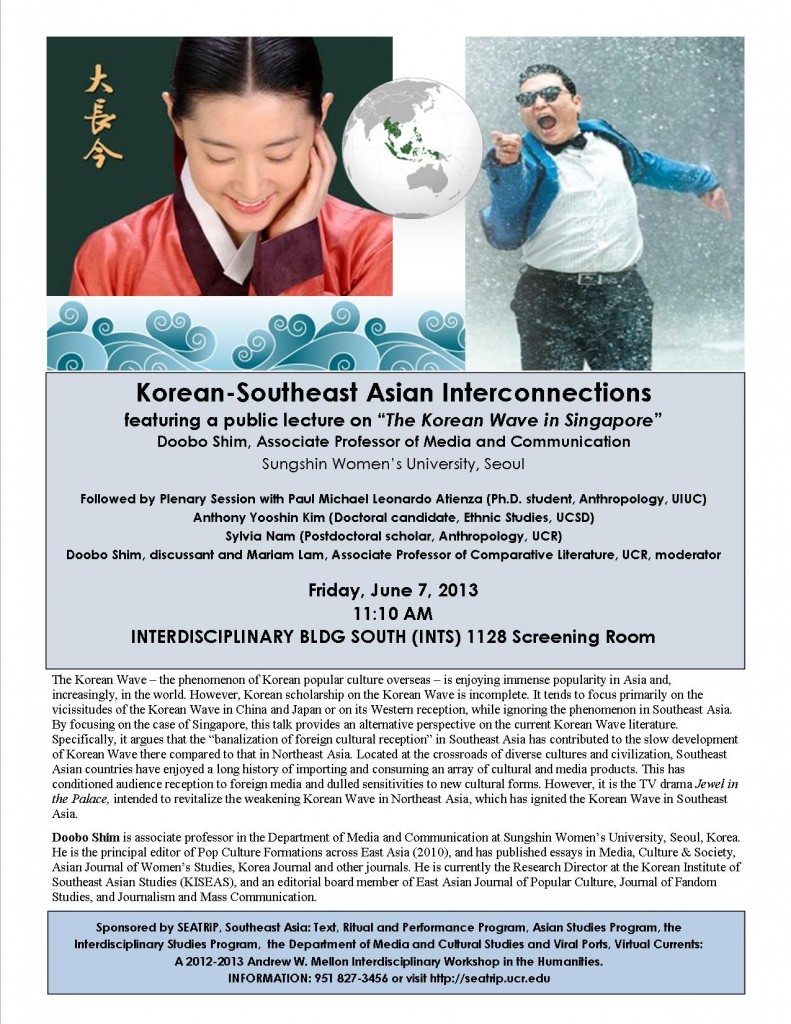Korean-Southeast Asian Interconnections
featuring a public lecture on “The Korean Wave in Singapore”
Doobo Shim, Associate Professor of Media and Communication
Sungshin Women’s University, Seoul
Followed by Plenary Session with
Paul Michael Leonardo Atienza (Ph.D. student, Anthropology, UIUC)
Anthony Yooshin Kim (Doctoral candidate, Ethnic Studies, UCSD)
Sylvia Nam (Postdoctoral scholar, Anthropology, UCR)
Doobo Shim, discussant and Mariam Lam, Associate Professor of Comparative Literature, UCR, moderator
Friday, June 7, 2013
11:10 AM
INTERDISCIPLINARY BLDG SOUTH (INTS) 1128 Screening Room
The Korean Wave – the phenomenon of Korean popular culture overseas – is enjoying immense popularity in Asia and, increasingly, in the world. However, Korean scholarship on the Korean Wave is incomplete. It tends to focus primarily on the vicissitudes of the Korean Wave in China and Japan or on its Western reception, while ignoring the phenomenon in Southeast Asia. By focusing on the case of Singapore, this talk provides an alternative perspective on the current Korean Wave literature. Specifically, it argues that the “banalization of foreign cultural reception” in Southeast Asia has contributed to the slow development of Korean Wave there compared to that in Northeast Asia. Located at the crossroads of diverse cultures and civilization, Southeast Asian countries have enjoyed a long history of importing and consuming an array of cultural and media products. This has conditioned audience reception to foreign media and dulled sensitivities to new cultural forms. However, it is the TV drama Jewel in the Palace, intended to revitalize the weakening Korean Wave in Northeast Asia, which has ignited the Korean Wave in Southeast Asia.
Doobo Shim is associate professor in the Department of Media and Communication at Sungshin Women’s University, Seoul, Korea. He is the principal editor of Pop Culture Formations across East Asia (2010), and has published essays in Media, Culture & Society, Asian Journal of Women’s Studies, Korea Journal and other journals. He is currently the Research Director at the Korean Institute of Southeast Asian Studies (KISEAS), and an editorial board member of East Asian Journal of Popular Culture, Journal of Fandom Studies, and Journalism and Mass Communication.

